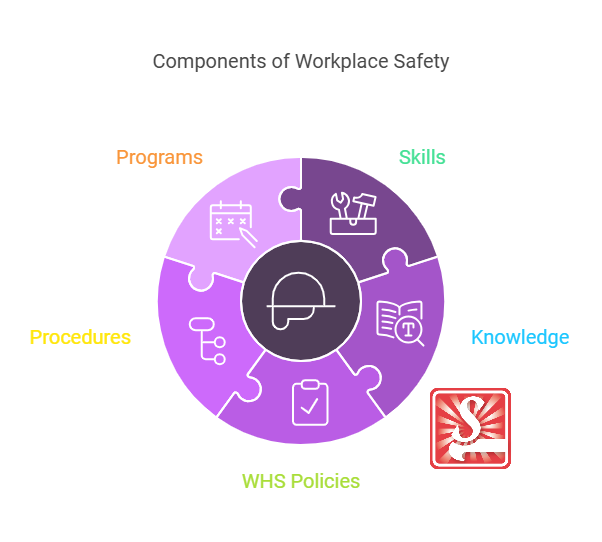Understanding Organisational Policies in Workplace Safety
Posted by SkillMaker in Dec, 2024
What is a concise description of organisational policies in workplace safety?

Organisational policies in workplace safety are formal guidelines or rules designed to protect employees’ health and well-being, enhance safety practices, and ensure compliance with national safety standards such as the Work Health and Safety Act in Australia. These policies guide actions and decisions related to hazard identification, risk management, and emergency response procedures.
Why do people in enterprises need organisational policies for workplace safety?
Enterprises need organisational policies for workplace safety to create a structured approach to managing and mitigating workplace hazards. These policies ensure that all employees are aware of safety protocols, which helps in reducing incidents and accidents. Moreover, it aligns the organisation with regulatory compliance, ultimately safeguarding the enterprise against legal liabilities and contributing to a positive work environment.
“Robust organisational policies are the backbone of effective workplace safety, fostering an environment where safety is a shared responsibility.”
What are the key components or elements of organisational policies in workplace safety?
Key components of organisational policies in workplace safety include:
- Safety Objectives: Defined goals aiming to improve workplace safety.
- Roles and Responsibilities: Clear designation of safety roles within the organisation.
- Hazard Identification and Risk Assessment: Procedures for recognising and evaluating safety risks.
- Incident Reporting and Investigation: Mechanisms for documenting and analyzing accidents.
- Training Programs: Ensuring employees are informed and educated about safety practices.
What key terms, with descriptions, relate to organisational policies in workplace safety?
- Risk Management: The process of identifying, assessing, and controlling threats to an organisation’s capital and earnings.
- Safety Audit: A systematic examination to determine whether activities comply with safety policies.
- Ergonomics: The study of people’s efficiency in their working environment to enhance safety.
- Personal Protective Equipment (PPE): Gear and equipment designed to protect workers from injury or infection.
- Compliance: Adherence to laws, regulations, guidelines, and specifications relevant to workplace safety.
Who is typically engaged with operating or implementing organisational policies in workplace safety?
Typically, safety officers, health and safety managers, supervisors, and employees at all levels are engaged in implementing organisational policies in workplace safety. Leadership teams set the tone by prioritising safety, while safety officers develop and enforce safety protocols. All employees are expected to adhere to these safety standards and contribute to a culture of safety.
How do organisational policies in workplace safety align or integrate with other components of Workplace Safety?

Organisational policies in workplace safety integrate with other components such as training, emergency preparedness, and incident management. Policies provide the groundwork upon which robust training programs are developed and facilitate clear protocols for responding to emergencies and investigating incidents. This integration ensures a comprehensive approach to managing workplace safety.
Where can the student go to find out more information about organisational policies in workplace safety?
What job roles would be knowledgeable about organisational policies in workplace safety?
Roles include:
- Health and Safety Managers
- Safety Officers
- HR Officers
- Site Supervisors
- Training Coordinators
What are organisational policies in workplace safety like in relation to sports, family, or schools?

In relation to sports, organisational policies in workplace safety can be compared to the rules and regulations that govern games, ensuring fair play and safety for all players. In a family context, they resemble household rules that maintain harmony and safety within the home. In schools, these policies are akin to codes of conduct that ensure a safe and conducive learning environment for all students.
(The first edition of this post was generated by AI to provide affordable education and insights to a learner-hungry world. The author will edit, endorse, and update it with additional rich learning content.)


 Post Tagged with
Post Tagged with